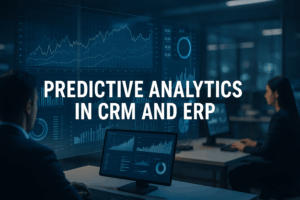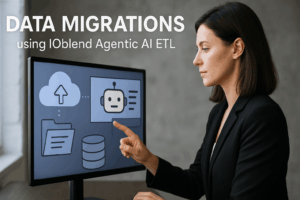Hello folks, IOblend here. Hope you are all keeping well.
There is one thing that has been bugging us recently, which led to the writing of this blog. While working on several data projects with some of our clients, we observed instances when data lineage had not been implemented as part of the solutions. In a couple of cases, data lineage was entirely overlooked, which raised our eyebrows.
Data lineage is paramount from the data auditing point of view. How else would you keep track of what is happening to your data throughout its lifecycle? What if your systems go down and the data becomes corrupted? How would you know what data generated spurious results down the line? You will really struggle to restore your data to the correct state if you do not know where the problem is.
The common reason for data lineage omission was the time pressure to deploy a new system. Delivering the system was considered a much higher priority than ensuring the data quality that fed it. We get it, designing and scripting data lineage across your entire dataflows and data estate can be a massive undertaking, especially under time and resource pressure.


However, data issues always come to bite you in the long run. Just from the security and reliability points of view, you absolutely must be on top of your data happenings. Data lineage gives you that ability. The more granular data lineage is, the easier your life will be when things go wrong with your data.
Inevitably, you will have to implement data lineage, but then someone will have to code it from scratch. Data lineage must go all the way across the data from the source to the end point and cover the data at the lowest level regardless of the types. It should be the same granularity for all stakeholders, so everyone works off the base baseline. You will then have a much greater confidence in your data estate.
Implementing data lineage is not a simple job. You need to set and build in data quality and monitoring policies for all dataflows. Depending on your resources, this can be a daunting task. It is much trickier to implement if you are doing live data streaming. There are some tools available on the market that can help you with the task, but you need to make sure they can work well with the rest of your data estate and give you sufficient granularity.
Since we have encountered data lineage issues on more than one occasion, we made data lineage an integral part of our solution. We do DataOps, and data lineage is DataOps. At IOblend, we made sure that the most granular data lineage is available to you ‘out-of-the-box’. It starts at record level with the raw data and maps the transformations all the way to the end target. Our process utilises the power of Apache Spark™ but requires no coding whatsoever on the user’s part. Just visually design your dataflow and data lineage is applied automatically, every time.
Once applied, you can trace data lineage via IOblend or any other analytical tool you may use at your data end points. No hassle. Your data citizens will always have the full confidence in the quality of their data.
IOblend – make you data estate state-of-the-art
Stay safe and catch you soon


Rethinking the Feature Store concept for MLOps
Rethinking the Feature Store concept for MLOps Today we talk about Feature Stores. The recent Databricks acquisition of Tecton raised an interesting question for us: can we make a feature store work with any infra just as easily as a dedicated system using IOblend? Let’s have a look. How a Feature Store Works Today Machine

CRM + ERP: Powering Predictive Analytics
The Data-Driven Value Chain: Predictive Analytics with CRM and ERP 📊 Did you know? A study on real-time data integration platforms revealed that organisations can reduce their average response time to supply chain disruptions from 5.2 hours to just 37 minutes. A Unified Data Landscape The modern value chain is a complex ecosystem where every component is interconnected,

Enhancing Data Migrations with IOblend Agentic AI ETL
LeanData Optimising Cloud Migration: for Telecoms with Agentic AI ETL 📡 Did you know? The global telecommunications industry is projected to create over £120 billion in value from agentic AI by 2026. The Dawn of Agentic AI ETL For data experts in the telecoms sector, the term ETL—Extract, Transform, Load—is a familiar, if often laborious, process. It’s

LeanData: Reduce Data Waste & Boost Efficiency
LeanData Strategy: Reduce Data Waste & Boost Efficiency | IOblend 📊 Did you know? Globally, we generate around 50 million tonnes of e-waste every year. What is LeanData? LeanData is more than a passing trend — it’s a disciplined, results-focused approach to data management.At its core, LeanData means shifting from a “collect everything, sort it later” mentality to

The Data Deluge: Are You Ready?
The Data Deluge: Are You Ready? 📰 Did you know? Some modern data centres are being designed with modularity in mind, allowing them to expand upwards – effectively “raising the roof” – to accommodate future increases in data demand without significant structural overhauls. — Raising the data roof refers to designing and implementing a data

The Proactive Shift: Harnessing Data to Transform Healthcare
The Proactive Shift: Harnessing Data to Transform Healthcare Outcomes 🔔 Did You Know? According to the National Institutes of Health, the implementation of data analytics in healthcare settings can reduce hospital readmissions by over 33%. The Proactive Healthcare Paradigm The healthcare industry has traditionally operated on a reactive model, where intervention occurs only after symptoms manifest

